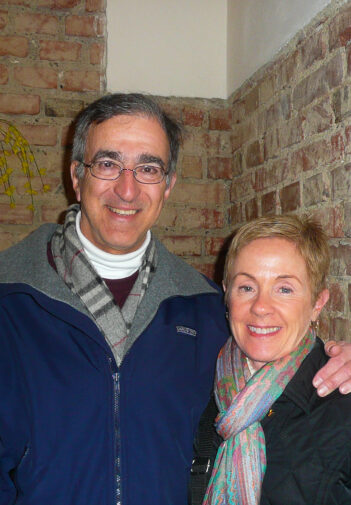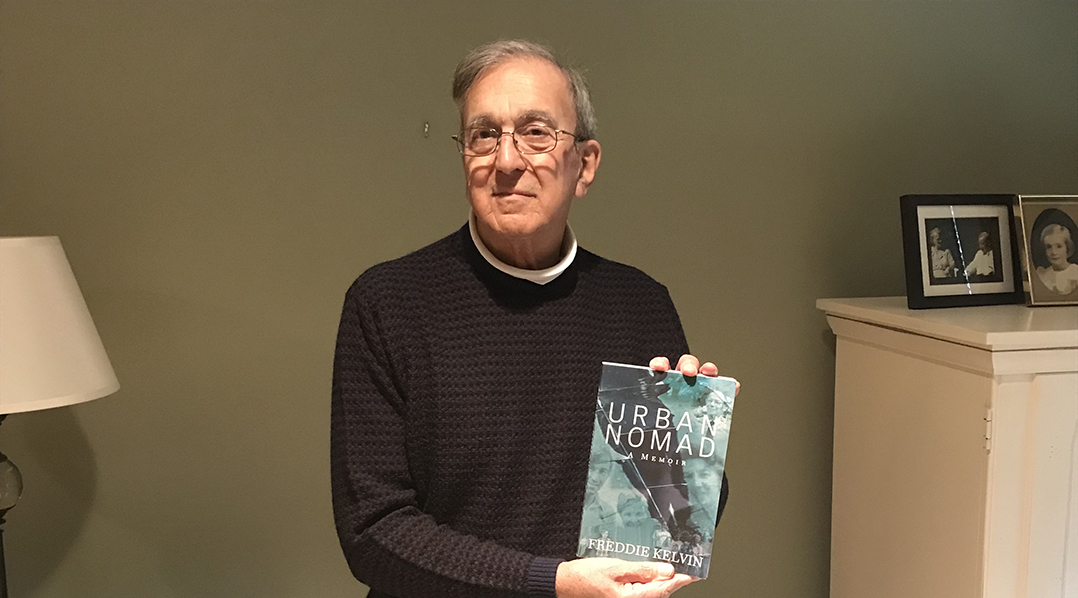Freddie Kelvin’s memoir begins in Austria several years before he was born when his Jewish parents fled from the Nazis.
“My parents’ escape was an extremely hazardous one,” the Carmel resident said. “My dad was interviewed by the Gestapo. He saw (Nazis) bringing Jews into the courtyard but leaving without them. In other words, Jews were being picked up to be put in prison behind where he was interviewed, and in many instances were going to be sent to concentration camps.”
Fortunately, Kelvin’s father was interviewed about something he wasn’t involved in, and he was released.
“He couldn’t believe the Gestapo official let him go, and at that point he realized he had to escape as fast as possible,” Kelvin said. “He escaped by a tortuous route, eventually to England. When the Allies were starting to win the war, they said, ‘Now it’s safe to have a child.’”
Kelvin, an only child, was born May 9, 1943. The retired radiologist, who has become a photographer, recently released his memoir, “Urban Nomad.”
“It’s a search for my identity, and where do I belong?” he said. “Writing the book was a cathartic experience because I had to stop and think about my past. I had to be aware of misjudgments. I was carried away by my career beyond what was necessary.”
Kelvin’s mother died when he was 14 and his father was devastated.
“He once told me that if it wasn’t for me, he would have driven the car over the cliff. I was that precious to him,” Kelvin said. “He was very sensitive deep down but was reluctant to show it.”
Kelvin grew up in an exclusively Jewish community in Leeds, England.
“It was a protective community where many were refugees like my father,” he said. “I lived there and then I resolved to leave the community behind me.”
Under advice from his father to avoid discrimination, Kelvin changed his last name from the more foreign-sounding Kohut to the British name of Kelvin.
So, people did not know Kelvin was Jewish when he attended college and applied for medical school.
“In order for me to have a level playing field as I embarked on a career in medicine, it was a great help to be not identified as a Jew and a foreigner,” Kelvin said.
Kelvin’s father did not practice any religion.
“He lost his eldest sister when she was 13,” Kelvin said. “The family said if that’s what God is, we no longer want to practice the Jewish religion.”
After Kelvin’s mother died, his father married a non-Jewish woman who was 30-plus years younger than he was.
“The Jewish community was not very forgiving that he married out of the faith,” Kelvin said. “She was very attractive and very charming. The Jewish community had wanted him to marry somebody his age that was Jewish. That embittered me a bit because they cared more about keeping the community intact than about the happiness of my father.
“In fact, that marriage gave him a new lease on life, without which he would not have been the same.”
Kelvin moved around during his training as an intern and resident. He spent a year in Canada during his medical training.
“I was moving from community to community, and they were always different,” Kelvin said. “Identity change is very complicated. It’s one thing to give up a Jewish ritual, it’s another to have a different identity to be moving from community to community and then to another country.”
When he was 32, Kelvin came to the U.S. to work at Duke University in Durham, N.C., for 10 years in a teaching faculty position in radiology.
“My first wife was a Christian, and we were married in a church,” he said. “I was haunted a bit by ghosts of my Jewish past. To be married in a church was distinctly unusual. An uncle of mine took me to task for doing that. I resolved that if I got married again, I’d get married not at a church but by a rabbi.”
He and his first wife divorced after three years and he met his future wife, a physician’s assistant, while at Duke.

“The rabbi upbraided me and said, ‘In my eyes, you’re not a Jew,’” Kelvin said. “I said, ‘Well, in Hitler’s eyes, I was unquestionably a Jew and I lost part of my family because of that, and you’re telling me I’m not Jewish.’ I was not happy with being told that.”
Kelvin said being Jewish is not only about religious faith but also about ethnic background.
Kelvin said he attends service once a year before the Day of Atonement. He also attends Christmas Eve services as his wife’s church.
“I light Hanukkah candles and that’s the only ritual,” he said.
Kelvin has been to Israel several times in the past 15 years. He started taking pictures at performing arts events at the Jewish Community Center in Indianapolis.
“I came to realize deep in my heart I was truly proud of my Jewish heritage,” Kelvin said. “The fact I wasn’t practicing being a Jew was not germane and didn’t influence my pride. It took me a long time to realize that deep down being a Jew really mattered. The visits to Israel cemented my recognition and affirmation of my Jewishness. There is something about Israel that is heartwarming, because in the Jewish spirit there is openness to discuss everything and anything. They are not shy to share their thoughts.”
Kelvin said people in the Midwest are often less open to saying what they think.
Kelvin said traveling has opened his eyes to how other people live. He retired in 2008 after being a radiologist at Methodist since 1985. He lived with his wife and two children in Zionsville before moving to Carmel in 2008. His daughter, Elizabeth, lives in Philadelphia and has two children. His son, David Kelvin, is single and lives in Houston. Both are Zionsville Community High School graduates.
Kelvin had a major heart attack in 2007. A defibrillator was used on him several times,
“I was not supposed to survive,” Kelvin said. “The fact I’m here, although I don’t believe in miracles, is not that far removed from a miracle.”
Kelvin said he ignored chest pain for 12 hours prior to the heart attack.
“The technicians said I had to see a physician right now,” he said. “I told them I had an annual checkup at 3 o’clock, it’s probably a chest virus.’ They said, ‘No, you have to see someone right now.’”
After an EKG, he was wheeled immediately to the emergency room.
“It was a major heart attack and led to a couple of cardiac arrests,” he said. “So, I’m lucky to be here.”

Finding his passion
A few years before retiring from his job as a radiologist, Freddie Kelvin started to develop an interest in photography. After he retired, he began taking photos for performing arts events.
Along with the Jewish Community Center, he also has taken photos at Indianapolis Symphony Orchestra and Indianapolis School of Ballet events and at Dance Kaleidoscope for 15 years.
“The performing arts are very important to me, and my way of giving back to the performing arts for inspiration is to be able to photograph them pro bono,” he said. “I should have never been a doctor because I’m not a scientist. I think at heart, my talents lay in the arts. I was always good at French, history and geography.”
Kelvin said in retrospect, he should have been a lawyer.
He began taking more abstract photos because taking realistic photos can become repetitive.
Kelvin said he is proud to be a featured artist at Carmel Art on Main for four years.
“Freddie Kelvin has a special eye for detail,” said Kim Greene, one of the co-owners of Carmel Art on Main Gallery. “Because of his background and training as a radiologist, he sees things differently than others and has a gift for capturing light, detail and movement in his photography. We are thankful that he shares this talent with us at Art on Main as one of our established artists.”
For more, visit freddiesfotosforever.com. The book is available on Amazon.com.





